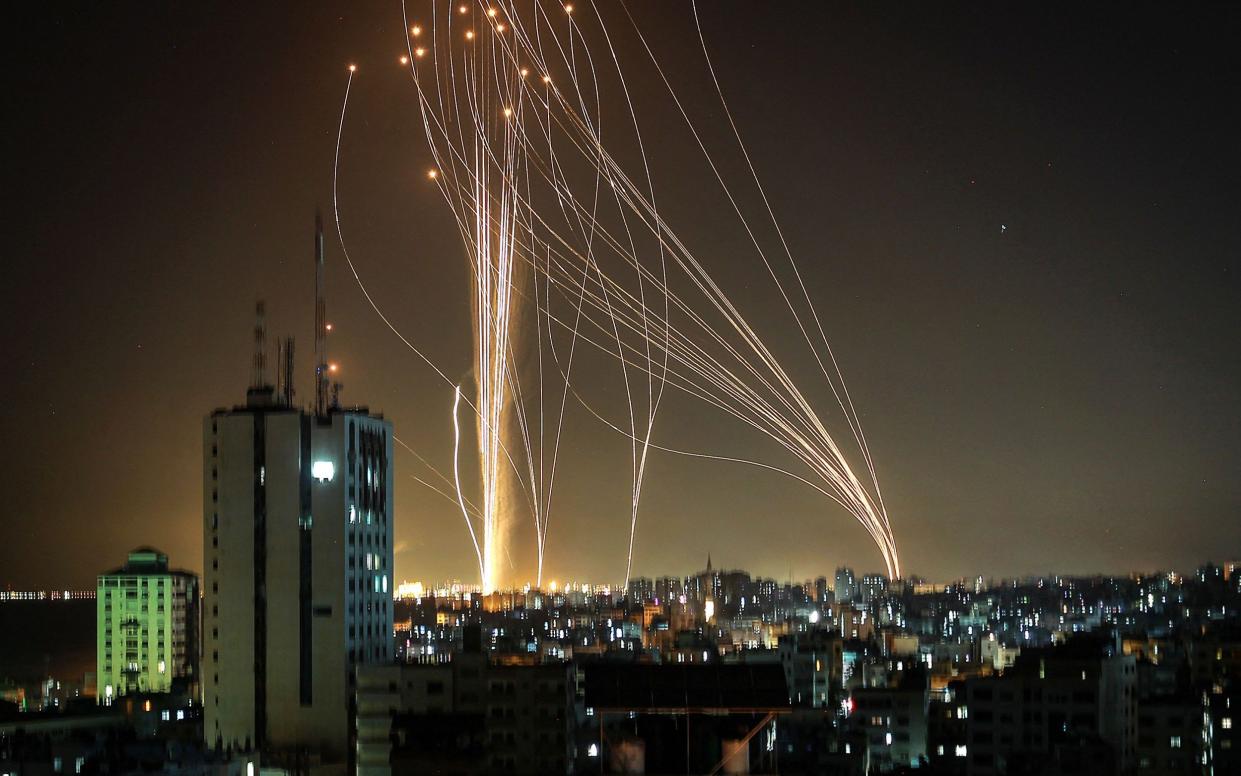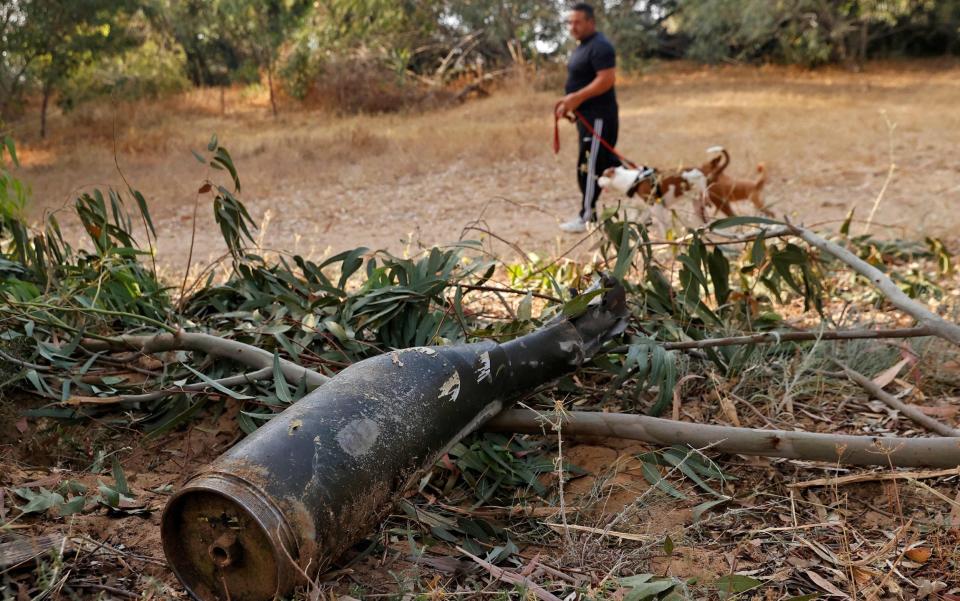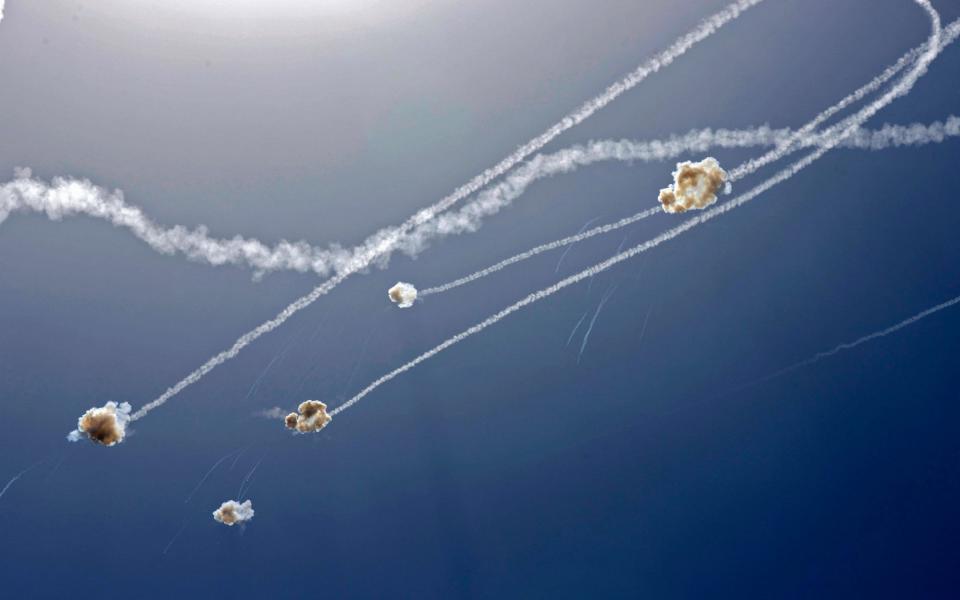How Hamas pierced Israel's famous Iron Dome shield

Israel's military was facing questions on Wednesday as to whether its Iron Dome missile defence system needed an upgrade, after five Israeli civilians were killed by rocket strikes.
The system, which Israeli officials say has a 90 per cent interception rate, has already avoided heavy loss of life in Tel Aviv, Ashkelon and other cities which became a focal point for Hamas as it sought to overwhelm air defences.
But on Wednesday, Israeli analysts said that for some time intelligence sources had been warning that Hamas had significantly improved its weaponry, to the extent that it could "pierce the Iron Dome shield."
“Iron Dome always had a weakness,” the Jerusalem Post’s intelligence, terrorism and legal analyst Yonah Jeremy Bob wrote in an article on Wednesday, referring to the system’s success rate.
Mr Bob stressed that this did not mean that the Iron Dome was no longer effective.

“If Hamas has more of those longer-range rockets, this could impact Israel’s plans for this round of violence and especially the question of how long it wants it to last,” he added.
The scale of this week’s rocket barrages have been unprecedented, with around a thousand missiles fired at longer ranges to challenge the capabilities of the Iron Dome system.
“Ten percent of the time, you have to take into consideration that it won’t do the job,” retired Israeli Brigadier General Amir Avivi said of the Iron Dome.
But Mr Avivi, who founded a group of retired military officers called Habithonistim to advocate for Israel’s security, insisted it was operating as intended.
“The system was designed for much bigger events,” he said. “Iron Dome can cope with a huge volume of rockets.”
Introduced into service 10 years ago, the Iron Dome system was developed by two Israeli defence firms with financial and technical assistance from the United States.
Watch: Israel steps up offensive against Gaza
Designed to intercept short-range rockets and mortars, the system uses radar to detect inbound threats and deploys interceptor rockets to detonate in the air to destroy incoming missiles.
The Israeli military has deployed 10 batteries of the Iron Dome system across the country and credits the system with greatly reducing casualties from rocket attacks.
“The number of Israelis killed and wounded would be far higher were it not for the Israeli Iron Dome System, which has been a lifesaver,” Israeli military spokesman Lieutenant Colonel Jonathan Conricus said on Wednesday, speaking on a call with reporters from outside a rocket damaged home in Yehud, on the eastern outskirts of Tel Aviv.
The house, 40 miles north of Gaza where the rocket was fired, was one of about 20 sites struck by Hamas and other militant factions in Gaza.

The unprecedented intensity of the rocket fire, which in some cases was trained deliberately on individual towns and cities, marks a new tactic by Hamas and Islamic Jihad to try to overwhelm the Iron Dome system.
Since the last major conflict in 2014, the militants have been increasing both the size of their arsenal and the capabilities of their rockets. “According to our estimates we’re talking about between 20,000 and 30,000 rockets in Gaza today, rockets and mortars,” said Lt Col Conricus.
“We’ve seen a constant expansion in terms of range and also in terms of the size of the warheads,” he said. “They have an advanced arsenal of rockets, I think it’s on par with the fire capabilities of a few small European countries.”

Produced using pipe and fertiliser using designs provided by Iranian military engineers, Israel has few options for disrupting the manufacture of rockets in Gaza, though weapons workshops are among several hundred sites the Israeli military says it has struck in densely populated Gaza this week.
“Israel’s aerial bombardment of Gaza – the sixth one in my adult life at least – is unlikely to produce a new outcome,” said Steven Wagner, a lecturer in International Security at Brunel University London.
“Israel’s Iron Dome missile defence, while mesmerising, should also be a stark reminder of the asymmetry of this conflict,” he said. “Hamas ordnance is simple, cheap, and can still occasionally break through the multi-million dollar defence system funded by the United States.”
The sheer number of rockets in militant hands, produced at a cost of just a few hundred dollars each, could pose a costly threat for Iron Dome to address, with each interceptor rocket costing an estimated $50,000, according to Israeli military.

However, Israel says that its costly defence system is worth every penny. “The rockets are not outsmarting the Iron Dome, the Iron Dome is outstanding in its capacity to adapt to new techniques and to new methods by the enemies,” said Lt Col Conricus.
And while the rockets have terrified Israeli civilians, Lt Col Conricus said their destructive power was limited: “The rockets definitely terrorise but are they capable of causing significant military damage? Not quite.”
Watch: Israel-Gaza conflict - What is happening and who is involved?


